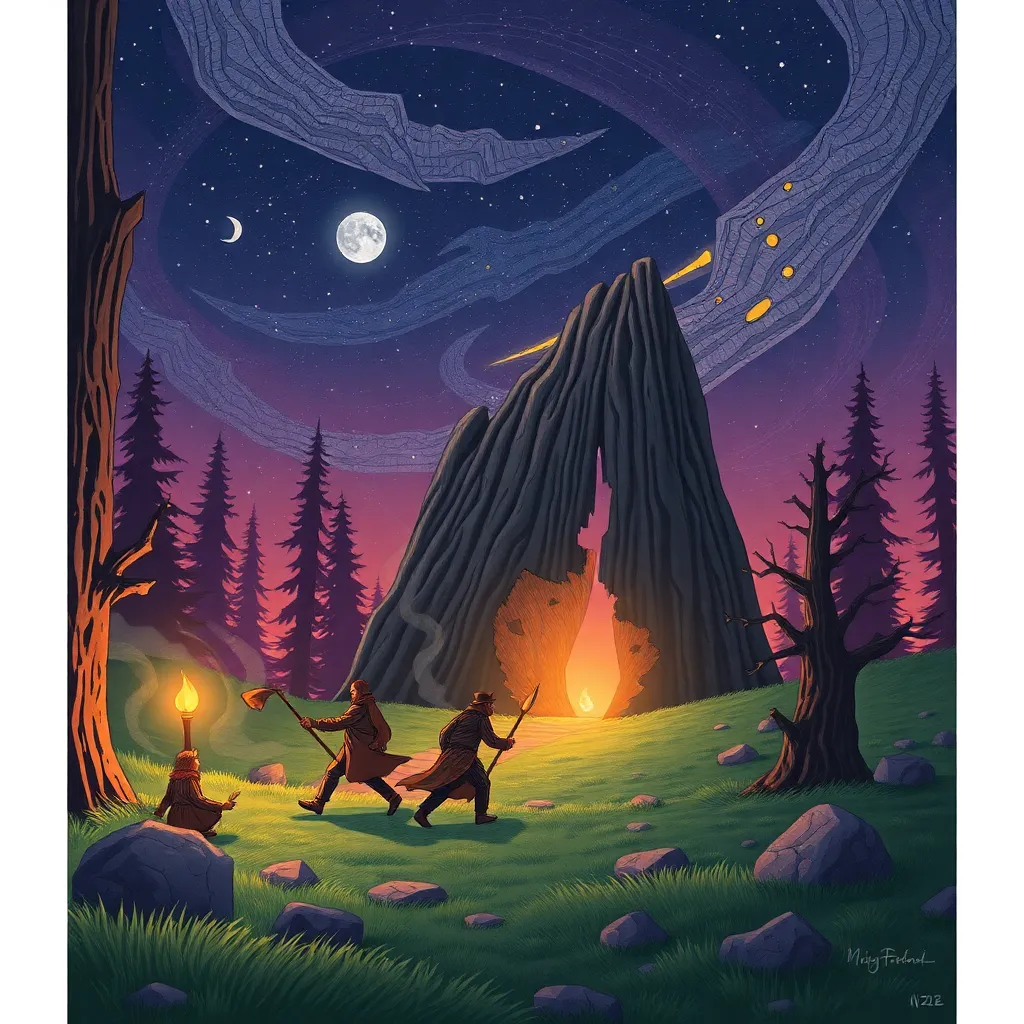From Myths to Legends: The Evolution of Brownie Folklore
I. Introduction
In the realm of folklore, brownies are often depicted as small, benevolent creatures known for their helpfulness and connection to domestic life. These mythical beings serve as a testament to the cultural narratives that shape our understanding of the world around us. Folklore plays a crucial role in cultural storytelling, often passing down wisdom, values, and collective memories through generations.
This article aims to explore the evolution of brownie folklore, tracing its historical origins, characteristics, symbolism, and transformation over time. By examining notable stories and their impact, we will also look at how brownies have found a place in modern culture, highlighting their enduring relevance.
II. Historical Origins of Brownie Folklore
The history of brownies can be traced back to early references in literature, where they were first depicted in various tales and myths. The term “brownie” is believed to have originated from the Scottish folklore of the 16th century, where these creatures were often portrayed as helpful household spirits.
Celtic and European traditions have significantly influenced the portrayal of brownies. They are closely related to other mythological beings, such as the hobgoblins and household spirits found in various cultures. As storytelling transitioned from oral traditions to written accounts, the tales of brownies began to take on more defined characteristics and roles.
III. Characteristics of Brownies in Folklore
Brownies are typically described with specific physical traits and behaviors that set them apart from other mythical creatures. Some of these characteristics include:
- Physical Traits: Brownies are often depicted as small, gnome-like figures, usually wearing brown clothing, which reflects their connection to the earth and domestic settings.
- Common Behaviors: They are known for their industriousness, often engaging in household chores during the night when humans are asleep. Brownies are usually shy and prefer to remain unseen.
- Roles: Traditionally, brownies play significant roles in household and agricultural life, assisting with tasks and ensuring prosperity in the home.
IV. The Symbolism of Brownies in Different Cultures
Brownies symbolize various themes across cultures, often embodying ideas of domesticity, helpfulness, and the supernatural. Some key points include:
- Domesticity: In many cultures, brownies represent the spirit of the home, emphasizing the importance of harmony and cooperation in family life.
- Variations Across Regions: The symbolism of brownies can vary significantly. In some cultures, they are seen as protectors of the household, while in others, they may represent mischief and unpredictability.
- Connection to Nature: Brownies are often linked to nature and the supernatural, serving as a reminder of the delicate balance between humanity and the natural world.
V. The Transformation of Brownie Legends Over Time
As society evolved, so too did the portrayal of brownies in folklore. The modern media landscape has significantly influenced how these creatures are depicted:
- Changes in Portrayal: In contemporary media, brownies are often romanticized or transformed into whimsical characters, moving away from their traditional roles as helpful household spirits.
- Urban Legends: The rise of urban legends has led to new interpretations of brownies, with stories often infused with modern anxieties and cultural shifts.
- Globalization: The impact of globalization has facilitated the exchange of folklore, leading to hybrid stories that reflect diverse cultural influences.
VI. Case Studies: Notable Brownie Stories and Their Impact
Throughout history, various notable brownie tales have emerged, each contributing to the rich tapestry of folklore. Some case studies include:
- The Brownie of Blednoch: A Scottish tale about a brownie who helps a farmer improve his fortunes, illustrating themes of gratitude and reciprocity.
- The Elves of the Forest: In Norse folklore, brownies are closely associated with nature, serving as guardians of the woods and teaching humans to respect the environment.
- Community Identity: Brownie stories often reflect the values and identity of the communities from which they originate, reinforcing cultural bonds and shared narratives.
These stories highlight important lessons and morals, such as the value of hard work, respect for nature, and the importance of community support.
VII. Brownies in Popular Culture Today
In recent years, brownies have made a significant impact on popular culture, appearing in various forms of media:
- Literature: Brownies have been featured in children’s books and fantasy novels, often depicted as whimsical characters who embark on adventures.
- Film and Television: Movies and TV shows have embraced brownies, sometimes portraying them as comedic sidekicks or magical beings that assist protagonists.
- Commercialization: The folklore surrounding brownies has been commercialized, with various products and merchandise inspired by their image and stories.
- Gaming Contexts: Brownies and similar creatures have found their way into modern fantasy games, where they often serve as helpful NPCs (non-playable characters) or mystical allies.
VIII. Conclusion
In conclusion, the evolution of brownie folklore illustrates the dynamic nature of cultural storytelling. From their historical origins as helpful household spirits to their modern representations in media, brownies continue to capture the imagination of people around the world.
The enduring relevance of folklore in contemporary society emphasizes the importance of sharing and preserving these stories. As we explore local brownie legends and their significance, we invite you to reflect on the myths and tales that shape your own cultural identity.



